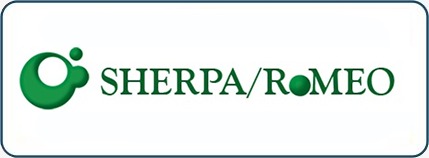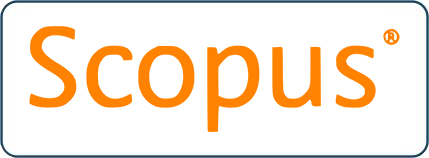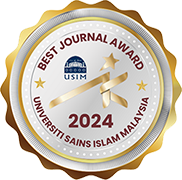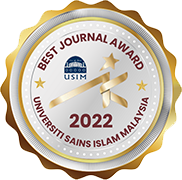PERMANENT MAKEUP: A TATTOO IMITATION PROCEDURE FROM THE SHARIAH PERSPECTIVE
DOI:
https://doi.org/10.33102/mjsl.vol12no2.544Keywords:
Permanent makeup, microblading, BB Glow, cosmetic tattoos, Shariah perspectiveAbstract
The growing interest in permanent makeup, which provides a lasting and perfect appearance, has sparked concerns regarding its safety and compliance with Islamic beliefs. This study aims to elucidate the Shariah ruling on permanent makeup by employing a document analysis method to examine all relevant Shariah information, including Quranic verses, hadith, Islamic jurisprudence and fatwas. Consequently, this study examines the medical aspects of the procedure to gain a comprehensive understanding of the issue. This study employed document analysis to investigate permanent makeup procedures from both the medical and Shariah perspectives. The analysis of the Shariah perspective on tattoos and cosmetic procedures included a review of medical journals and websites addressing the practice, focusing on techniques, safety, and concerns associated with permanent makeup procedures. Additionally, fatwas concerning permanent makeup from Islamic scholars available on fatwa websites across the globe were analysed. This study concludes that Muslims should refrain from undergoing permanent makeup procedures because they involve skin penetration and the use of permanent pigments, making them comparable to tattoos, which are prohibited in Islam. This study on halal in cosmetic services adds to the existing body of knowledge in the halal industry, and pave the way for further research to be conducted on similar topics in the future.Downloads
References
’Ajibah, A. A. A. ibn M. ibn. (2015). Al-bahr al-muhit. Dar-al-Risalah al-'Alamiyyah Publishing.
Abū Dāʼūd, S. ibn al-A. al-S. (2008). Sunan Abi Dawud. Maktaba Dar Al-Salam.
Al-Haq, J. al-H. A. J. (2005). Buhuth wa fatawa Islamiyah fi qadhaya mu’asirah. Dar al-Hadith Publishing.
Allam, S. I. (2018). “Tajmil al-hajibayn bi-istikhdam taqniyyat al-microblading”. Dar al-Ifta al-Misriyyah. https://www.dar-alifta.org/ar/fatawa/14893/تجميل-الحاجبين-باستخدام-تقنية-المايكروبليدنج
Al-Mahamid, S. H. (2020). Al-Ijtihād al-maqāṣidī fī al-qaḍāyā al-ṭibbiyyah: al-taʿlīl bi’l-shīn fī al-fiqh al-Islāmī anmūdhajan: Maqāṣid-based ijtihad in medical issues: reasoning through disrepute in Islamic jurisprudence as a model. AL-MAQASID: The International Journal of Maqasid Studies and Advanced Islamic Research, 1(1), 41–57. https://doi.org/10.55265/almaqasid.v1i1.2
Al-Qardawi, Y. (1999). The lawful and the prohibited in Islam (Al-Halal wal haram fil islam) (Revised). American Trust Publications.
Al-Utsaimin, M. S. (2013). Syarah usul min ’ilmil ushul. Dar al-'Alamiyyah.
Andreou, E., Hatziantoniou, S., Rallis, E., & Kefala, V. (2021). Safety of tattoos and permanent make-up (PMU) colorants. Cosmetics, 8(2), 1-9. https://doi.org/10.3390/cosmetics8020047
Andreou, E., Triantafyllou, A. K., Mountsaki, S., Rallis, E., Lamari, F. N., Hatziantoniou, S., & Kefala, V. (2022). “Permanent make-up (PMU) inks decolorization using plant origin materials”. Origin. https://www.originmaterials.com/products/terephthalic-acid-pta
An-Nawawī, A. Z. Y. ibn S. A.-D. (1998). Riyadh al-Salihin. Dar Al-Salam Publishing.
Atiyeh, B. S., Kadry, M., Hayek, S. N., & Musharafieh, R. S. (2008). Aesthetic surgery and religion: Islamic law perspective. Aesthetic Plastic Surgery, 32(1), 1–10. https://doi.org/10.1007/s00266-007-9040-7
Bakharudin, Y. (2021, February 27). “Irsyad Al-Fatwa siri ke-556: Hukum sulam bedak”. Mufti of Federal Territory's Office. https://muftiwp.gov.my/en/artikel/irsyad-fatwa/irsyad-fatwa-umum-cat/4686-irsyad-al-fatwa-siri-ke-556
Bowen, G. A. (2009). Document analysis as a qualitative research method. Qualitative Research Journal, 9(2), 27–40. https://doi.org/10.3316/QRJ0902027
Dodou, K. (2021). Special Issue “Current and evolving practices in the quality control of cosmetics”. Cosmetics, 8(4), 1-2. https://doi.org/10.3390/cosmetics8040100
Foerster, M., Dufour, L., Bäumler, W., Schreiver, I., Goldberg, M., Zins, M., Ezzedine, K., & Schüz, J. (2023). Development and validation of the epidemiological tattoo assessment tool to assess ink exposure and related factors in tattooed populations for medical research: Cross-sectional validation study. JMIR Formative Research, 7, e42158. https://doi.org/10.2196/42158
Guerra, E., Llompart, M., & Garcia-Jares, C. (2018). Analysis of dyes in cosmetics: Challenges and recent developments. Cosmetics, 5(3), 1-15. https://doi.org/10.3390/cosmetics5030047
Hamdan, M. N., Ramli, M. A., Md Ariffin, M. F., Thaidi, H. A. A., Ab Rahman, M. F., Ramli, N., & Mohamad Riza, N. S. (2022). The concept of taghyir khalqillah through mufassirin perspective: An analysis based on Surah Al-Nisa’, verse 119. International Journal of Academic Research in Business and Social Sciences, 12(1), 1682-1699. https://doi.org/10.6007/ijarbss/v12-i1/12029
Huisman, S., van der Bent, S. A. S., Wolkerstorfer, A., & Rustemeyer, T. (2019). Granulomatous tattoo reactions in permanent makeup of the eyebrows. Journal of Cosmetic Dermatology, 18(1), 212–214. https://doi.org/10.1111/jocd.12540
Ibn al-Hajjaj, M. (2007). Sahih Muslim. Darussalam International Publication.
Jin, H. S., & Chang, B. S. (2022). Analysis of microstructural characteristics and components of red and yellow ink pigments used in permanent makeup. Applied Microscopy, 52(1), 1-8. https://doi.org/10.1186/s42649-022-00072-3
Ju, H. J., Eun, S. H., Lee, H. N., Lee, J. H., Kim, G. M., & Bae, J. M. (2020). Micropigmentation for vitiligo on light to moderately colored skin: Updated evidence from a clinical and animal study. Journal of Dermatology, 47(5), 464–469. https://doi.org/10.1111/1346-8138.15282
Kandhari, R., Kaur, I., & Sharma, D. (2020). Mesococktails and mesoproducts in aesthetic dermatology. Dermatologic Therapy, 33(6). e14218. https://doi.org/10.1111/dth.14218
Kerure, A. S., Marwah, M., Wag, N. D., & Udare, S. (2023). Micropigmentation. Indian Dermatology Online Journal, 14(5), 605–610. https://doi.org/10.4103/idoj.IDOJ
Koh, C. W., & Kyoungjin. (2021). A medical perspective of the practice of semi-permanent makeup in South Korea. Journal of Cosmetic Medicine, 5(1), 16–23. https://doi.org/10.25056/jcm.2021.5.1.16
Lim, S. H., Lee, S., Lee, Y. Bin, Lee, C. H., Lee, J. W., Lee, S.-H., Lee, J. Y., Kim, J. S., Park, M. Y., Koh, S. B., & Choi, E. H. (2022). Increased prevalence of transfusion-transmitted diseases among people with tattoos: A systematic review and meta-analysis. PloS One, 17(1), e0262990. https://doi.org/10.1371/journal.pone.0262990
Mohd Aswadi, M. S., Md Sawari , M. F. ., Sitiris , M. ., & Baharuddin, A. S. . (2021). Parameter al-dhariʿah menurut perspektif Syariʿah: Parameter of al-dharīah from the perspective of Shari’ah. AL-MAQASID: The International Journal of Maqasid Studies and Advanced Islamic Research, 2(2), 38–49. https://doi.org/10.55265/almaqasid.v2i2.19
Merriam, S. B. (1998). Qualitative research and case study applications in education. San Francisco: Jossey-Bass Publishers.
Miranda, M. D. (2020). Tattoos and tattoo inks: Forensic considerations. WIREs Forensic Science, 2(1), 1–16. https://doi.org/10.1002/wfs2.1360
Muhsin, S. M. (2023). Islamic jurisprudence on harm versus harm scenarios in medical confidentiality. HEC Forum: An Interdisciplinary Journal on Hospitals’ Ethical and Legal Issues, 1–26. https://doi.org/10.1007/s10730-022-09503-w
Nawawī. (1999). The forty ḥadīth of al-Imām an-Nawawi: text with explanatory notes. Abul-Qasim Publishing House.
Omi, T. (2018). Evaluation of the safety and efficacy of continuous use of a home-use high-frequency facial treatment appliance. Journal of Cosmetics, Dermatological Sciences and Applications, 8(1), 25–34. https://doi.org/10.4236/jcdsa.2018.81005
Pazos, M. D., Hu, Y., Elani, Y., Browning, K. L., Jiang, N., & Yetisen, A. K. (2021). Tattoo inks for optical biosensing in interstitial fluid. Advanced Healthcare Materials, 10(21). e2101238. https://doi.org/10.1002/adhm.202101238
Perlis Fatwa Department. (2020, January 14). “Fatwa berkaitan sulam bedak, tanam rambut dan janggut”. Jabatan Mufti Negeri Perlis. https://muftiperlis.gov.my/index.php/himpunan-fatwa-negeri/219-fatwa-berkaitan-sulam-bedak-tanam-rambut-dan-janggut
Resnik, D. B. (2021, December 23). “What is ethics in research and why is it important”. National Institute of Environmental Health Sciences. https://www.niehs.nih.gov/research/resources/bioethics/whatis/index.cfm
Roeder, A., Landthaler, M., & Bäumler, W. (2022). Tattoo removal techniques: Current options and future directions. Laser Therapy, 31(4), 1-12. https://doi.org/10.5978/islsm.21-OR-03
Rohrer, T. E. (2018). Cosmeceuticals and cosmetics. Journal of Drugs in Dermatology: JDD, 17(10), s113–s116.
Rosman, A. S., Fadzillah, N. A., Haron, Z., Ripin, M. N., Hehsan, A., Jandra, M., & Jamli, N. A. O. (2019). Fatwa & Sains Perubatan Moden Menurut Perspektif Maqasid Syariah. International Journal of Islamic and Civilizational Studies (Umran), 2(2), 151–164. www.http://jurnalumran.utm.my/index.php/umran
Salama, M. (2024, July 25). “Is microblading halal?”. About Islam. https://aboutislam.net/counseling/ask-the-scholar/women-issues/eyebrow-microblading-permissible-islam/
Sarfraz, A., Iftikhar, M., & Saeed, F. (2021). Nanotechnology in skincare: A critical review. Journal of Cosmetic Dermatology, 20(5), 1308–1316. https://doi.org/10.1111/jocd.14054
Serup, J., Carlsen, K. H., & Sepehri, M. (2015). Tattoo complaints and complications: Diagnosis and clinical spectrum. Current Problems in Dermatology, 48, 48–60. https://doi.org/10.1159/000369645
Setia, M. S. (2016). Methodology series module 3: Cross-sectional studies. Indian Journal of Dermatology, 61(3), 261–264. https://doi.org/10.4103/0019-5154.182410
Setterfield, L. (2020). BB glow & microneedling – Risks & benefits. Retrieved from https://needlingguide.com/bb-glow-microneedling-risks-benefits/
Stake, R. E. (1995). The art of case study research. Sage Publications, Inc.
Stavros, V. M., Maria, P., & Avgeropoulos, I. G. (2021). Chapter 8 - Regulation of micro/nano-pigmentation in Europe. In N. Abbate, & V. G. D. Spagnolo (Eds.), Advances in Nanomedicine for the Delivery of Therapeutic Nucleic Acids (pp. 133–156). Elsevier. https://doi.org/10.1016/B978-0-12-823151-8.00006-7
Sugibayashi, K., Yusuf, E., Todo, H., Dahlizar, S., Sakdiset, P., Arce, F. J., & See, G. L. (2019). Halal cosmetics: A review on ingredients, production, and testing methods. Cosmetics, 6(3), 1–17. https://doi.org/10.3390/cosmetics6030037
Tirmidhī, M. ibn ʻĪsá. (2007.). Jami al-Tirmidhi. Maa sharḥihi tuḥfat al-aḥwadhi / li-Abd al-Raḥman al-Mubarakfuri. Darussalam International Publication.
Tomita, S., Mori, K., Yamazaki, H., & Mori, K. (2021). Complications of permanent makeup procedures for the eyebrow and eyeline. Medicine, 100(18), E25755. https://doi.org/10.1097/MD.0000000000025755
Tosir Miah, M. (2020, August 31). “Are eyelash extensions and eyebrow embroidery halal in Islam”. Dar al-Ifta’ Birmingham. https://daruliftabirmingham.co.uk/home/are-eyelash-extensions-and-eyebrow-embroidery-halal-in-islam/
Truswell, W. H. (2020). Prescription skin care products and skin rejuvenation. Facial Plastic Surgery Clinics of North America, 28(1), 59–65. https://doi.org/10.1016/j.fsc.2019.09.005
Valiga, A., Albornoz, C. A., Chitsazzadeh, V., Wang, J. V., Saedi, N., Geronemus, R. G., & Friedman, P. M. (2022). Medical spa facilities and nonphysician operators in aesthetics. Clinics in Dermatology, 40(3), 239–243. https://doi.org/10.1016/j.clindermatol.2021.11.007
Wang, J. V., Albornoz, C. A., Goldbach, H., Mesinkovska, N., Rohrer, T., Zachary, C. B., & Saedi, N. (2020). Experiences With Medical Spas and Associated Complications: A Survey of Aesthetic Practitioners. Dermatologic surgery: official publication for American Society for Dermatologic Surgery [et al.], 46(12), 1543–1548. https://doi.org/10.1097/DSS.0000000000002344
Zamzuri, M. M., Halim, M. S., Isa, A. M., & Nasohah, Z. (2012). Permissibility of cosmetic surgery in Islam. Middle-East Journal of Scientific Research, 12(2), 195-202.
Downloads
Published
Issue
Section
Categories
License
Copyright (c) 2024 Nusaibah Anuar Musaddad, Elistina Abu Bakar, Uswatun Hasanah Zaidan, Mohd Daud Awang, Yasmin Hanani Mohd Safian

This work is licensed under a Creative Commons Attribution-NonCommercial 4.0 International License.















































